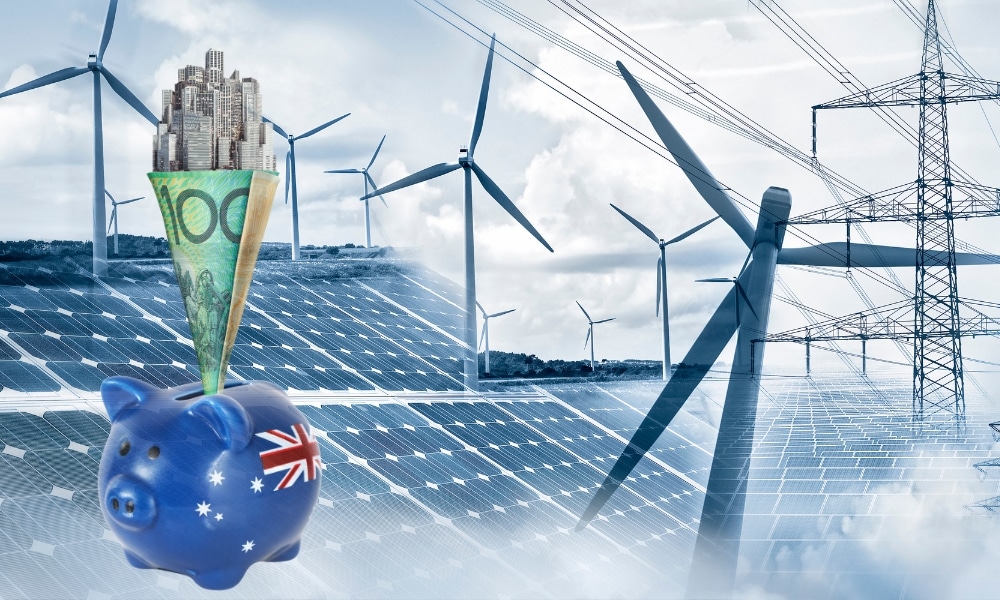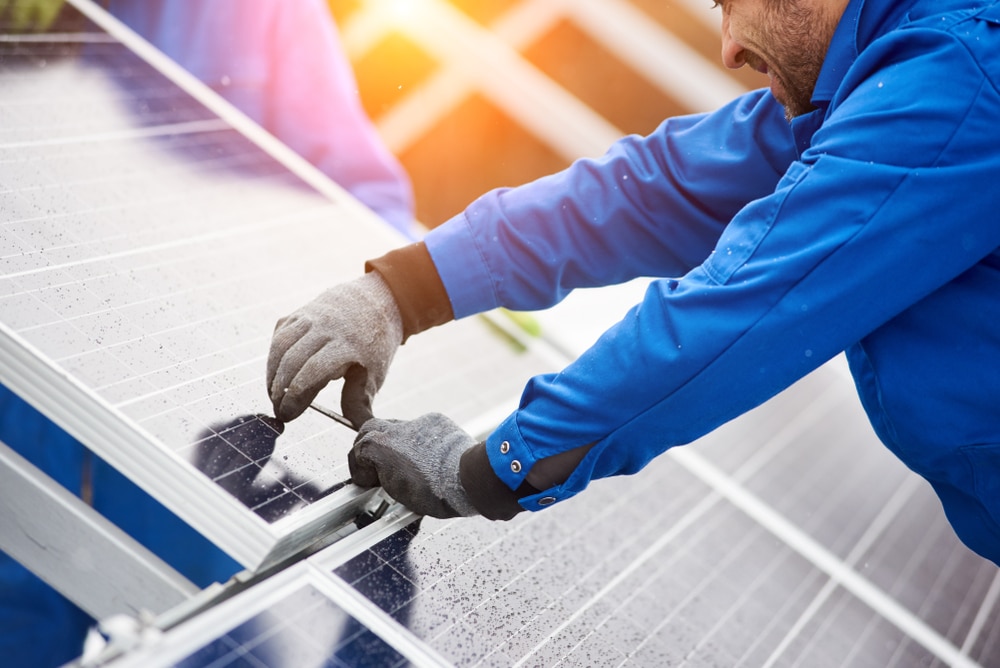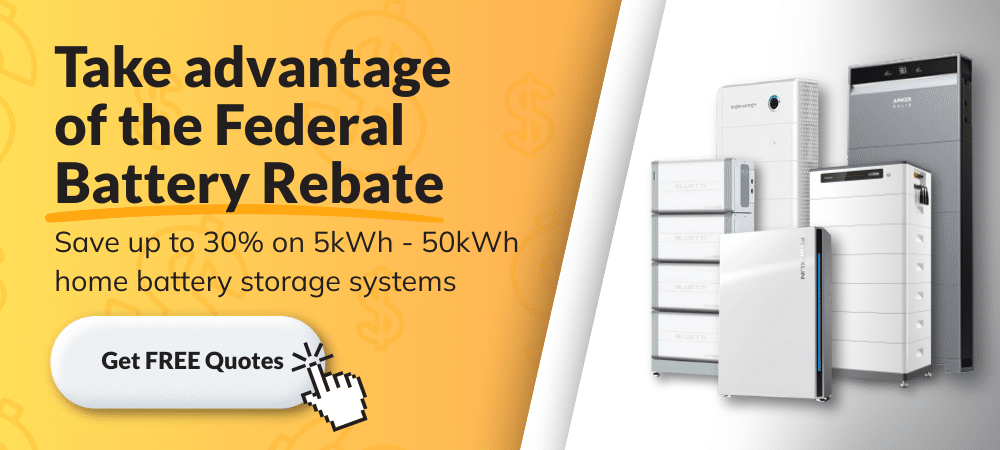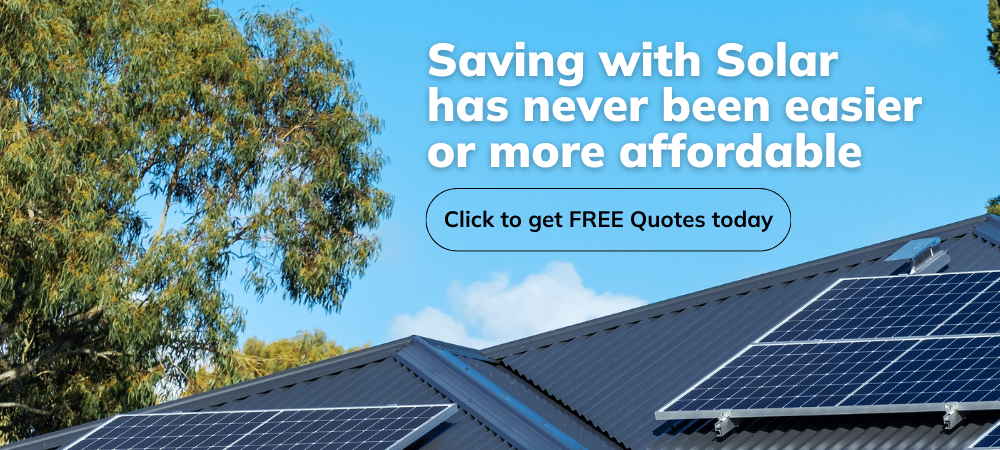Solar feed-in tariffs are a rate paid for electricity fed back into the electricity grid from a designated renewable electricity generation source such as a rooftop solar panel system or wind turbine.
Exploring the global impact of feed-in tariff regulations on solar energy uptake, it’s clear that sustainable choices can thrive. As you navigate the possibilities for your own energy transition, Energy Matters offers a practical step forward. Get FREE solar quotes from them, ensuring your journey into renewable energy is both informed and effortless.

On this page
Feed-in tariffs in Australia – at a glance
Feed-in tariff regulations for renewable energy exist in over 40 countries worldwide, and they are widely considered one of the most effective ways to increase solar energy uptake.
What is a feed-in tariff?
When you feed solar energy produced by your home panels into the electricity grid, you get paid a certain amount per kilowatt hour (kWh) of electricity. It is known as a solar feed-in tariff. These prices change depending on your electricity plan, energy retailer, and state or territory.
A few cents per kWh are paid as a feed-in tariff for each kilowatt hour (kWh) of electricity a home’s solar system exports to the energy grid. Feed-in tariff is deducted from your monthly bill instead of being paid in cash. Searching for the best solar deals is crucial because a high feed-in tariff can significantly lower your electricity costs.
How feed-in tariffs work
You should be aware of two different solar feed-in tariffs:
- Gross feed-in tariffs
- Net feed-in tariffs.
Both tariffs compensate you for the electricity your renewable energy systems—such as photovoltaic (PV) solar panels or solar thermal systems—return to the grid. However, they operate slightly differently.
Gross vs. net feed-in tariff
In the case of a gross feed-in tariff, your electricity retailer will give you credit for the electricity your system produces and feeds back into the grid but will bill you separately for the electricity you use. As net feed-in tariffs, also known as export metering, are more frequently used, these solar feed-in tariffs are gradually being phased out of the market.
South Australia, Queensland, Victoria, Tasmania, New South Wales, and the Australian Capital Territory employ net feed-in tariffs. In contrast to gross feed-in tariffs, net feed-in tariffs only give you credit for the solar energy you generate after your home or business has consumed all the necessary electricity (i.e. your excess). Your retailer will still charge you for the extra electricity you consume from the grid if your system cannot generate enough energy to power your house or place of business.
Please note: Energy Matters advises consumers to shop for solar-friendly electricity retailers when considering accessing feed-in tariffs. This solar-friendly electricity retailer ensures consumers won’t suffer penalties in other ways regarding their electricity bill once they have a system installed. Some retailers also offer an additional incentive over and above the legislated amount where a legislated amount exists.
State | Current Rate Paid* |
VIC | 0.5 to 5.0c/kWh (depending on retailer) |
SA | 0.0 to 10.0c/kWh (depending on retailer) |
ACT | 5.0 to 10.0c/kWh (depending on retailer) |
TAS | 8.78c to 10.0c/kWh (depending on retailer) |
NT | 9.13 to 11.0c/kWh (depending on retailer) |
WA | 2.0 to 55.99c/kW (depending on retailer) |
QLD | 0.0 to 10.0c/kWh (depending on retailer) |
NSW | 0.0 to 12.0c/kWh (depending on retailer) |
*The above figures are general, concerning new connections and are subject to change. View grid connect solar power specials connect solar power specials for your state or get an obligation–free online quote for home solar power! | |
Legacy feed-in tariff program closures
Several legacy feed-in tariff incentive payment rates ceased at the end of 2016. These changes will affect some early adopters of solar power, who will pay current general rates for electricity exports. Learn more.
Is an income from a feed-in tariff taxable?
At this point, there doesn’t appear to be any specific tax legislation dealing with income derived from a feed-in tariff. Whether it is assessable income depends on the income-producing nature of the activity. If it can demonstrate that the system was installed to make a profit, then receipts under the feed-in tariff would be considered assessable income. At the same time, all expenses associated with the income-generating activity would be deductible (e.g. depreciation).

In most cases, systems installed at domestic sites would not be taxable as they would be considered personal use/hobby (i.e. not like a business or profit-making scheme). If the system is installed at a commercial site, it will most likely be taxable. However, system owners should consult their accountants for advice or can also request a private ruling from the ATO. You can view an example of an ATO private ruling’s results relating to feed-in tariffs here.
Feed-in tariff income and social security
According to a May 2010 announcement from Centrelink, feed-in tariff credits, where applied as a credit on an electricity account, are not included in Centrelink’s income test for pensioners.
Credits converted to cash payments, such as cheques or direct deposits, will still be used.
The adjusted policy applies from 14 May 2010 and is relevant to not just pensions but all Social Security income support payments such as NewStart. However, people who are affected by Family Tax Allowance and Parenting Payments should consult with their local Centrelink Office.
Is GST payable on feed-in tariff revenue?
Individuals will not need to pay/remit GST from their feed-in tariff income. The reason is that selling electricity back to the utility providers is considered an enterprise. Still, you need to receive a certain amount per annum from this source to be required to register for GST. However, businesses will need to pay/remit GST for their feed-in tariff income.
Solar feed-in tariffs and battery systems
Many people have asked if their solar feed-in tariff payments will be affected if they install energy storage. Whether the installation of a home energy storage system will affect your feed-in tariff payments will depend on the state you are located in and the nature of the system.
For many solar battery system owners, the issue of feed-in tariffs becomes a less important consideration considering they’ll be storing surplus energy. Visit this page to learn more about home battery storage.
Solar incentive differs from a solar feed-in tariff
The difference between the solar incentive and a solar feed-in tariff is that the solar incentive reduces the upfront cost of buying a solar power system, whereas solar feed-in tariffs are compensation for electricity put into the grid once solar panels have been installed. The solar incentive, technically a point-of-sale discount rather than an incentive, offers a reduction of several thousand dollars for most installations.
On December 31, 2030, the Australian solar incentive will end after being decreased during the preceding years. It is frequently referred to as an incentive, even though it isn’t one in the strictest sense. Therefore that’s how we usually refer to it.
Australian States and Territories: Feed-in Tariffs
Victoria feed-in tariff
- The 2025-26 ‘flat rate’ minimum feed-in tariff is 0.04 cents per kilowatt hour. This tariff applies regardless of the time of day or day of the week.
- The 2024-25 ‘flat rate’ minimum feed-in tariff is 3.3 cents per kilowatt hour. This tariff applies regardless of the time of day or day of the week.
- The 2025-26 ‘time-varying’ minimum feed-in tariffs are between 0.0 and 7.55 cents per kilowatt hour.
- The 2024-25 ‘time-varying’ minimum feed-in tariffs are between 2.1 and 8.4 cents per kilowatt hour.
| OPTION 1 | |||
| Period | Weekday | Weekend | Rate: cents per kilowatt hour (c/kWh) |
| Overnight | 10 pm to 7 am | 10 pm to 7 am | 7.6 c/kWh |
| Day | 7 am to 3 pm, 9 pm to 10 pm | 7 am to 10 pm | 2.8 c/kWh |
| Early Evening | 3 pm to 9 pm | n/a | 7.0 c/kWh |
| OPTION 2 | |||
| Period | Everyday | Rate: cents per kilowatt hour (c/kWh) | |
| Shoulder | 9 pm to 10 am ; 2 pm to 4 pm | 4.1 c/kWh | |
| Off peak | 10 am to 2 pm | 2.1 c/kWh | |
| Peak | 4 pm to 9 pm | 8.4 c/kWh | |
Check out our page to learn more about solar feed in tariff Victoria.
Which Victorian electricity distributor should you choose?
Unfortunately, you have no choice. A distributor is assigned to specific areas:
- Citipower: CitiPower distributes electricity to Melbourne’s CBD and inner suburbs.
- Jemena: Jemena Electricity Networks distributes electricity to Melbourne’s northwest greater metropolitan region.
- Powercor Australia: Supplies electricity to Melbourne’s outer western suburbs and regional and rural centres in the west and central areas, including Ballarat, Bendigo and Geelong.
- SP Ausnet: Supplies electricity to eastern metropolitan Melbourne and eastern Victoria.
- United Energy Distribution: Supplies electricity to the southeast Melbourne metropolitan area and the Mornington Peninsula.
Which retailer should you choose?
While you cannot change distributors, you can switch retailers.
At the electricity retailer level, whether in Victoria or any other state, we always suggest that people shop around – some retailers are far more solar friendly than others and will offer better rates, higher payments for the power your system produces and/or better arrangements regarding your account generally.
Read more about the solar feed-in tariff in Victoria
South Australia feed-in tariff
The Commission has decided that starting on January 1, 2017, it would not set a minimum amount for the South Australian Retailer Feed-in Tariff (RFiT) scheme under the requirements of the Electricity Act 1996 and following a thorough public review.
The RFiT amount and structures each electricity retailer will pay its solar consumers for electricity fed into the distribution network must be determined. Retailers must provide public samples of how their deals help solar customers.
Read more about the solar feed-in tariff in South Australia
ACT feed-in tariff
Retailers voluntarily provide feed-in tariff rates that are competitive. The Independent Competition and Regulatory Commission (ICRC) keep tabs on the price of feed-in tariffs for consumers and merchants and publishes a report on it every year. Comparing feed-in tariffs is essential because they differ between shops and depend on your specific situation.
Read more about the solar feed-in tariff in ACT
Tasmania solar feed-in tariff
Customers must receive a minimum feed-in tariff from retailers doing business in Tasmania for electricity exported to the grid from approved electricity-generating installations. The Regulator uses the procedure outlined in the applicable feed-in tariff rate determination every financial year to calculate the regulated feed-in tariff rate.
According to the Office of the Tasmanian Economic Regulator, as of July 2025 – 30 June 2026, the minimum feed-in tariff rate is 8.782 cents per kWh. However, some providers choose to offer more competitive rates than this.
Read more about the solar feed-in tariff in Tasmania
Northern Territory feed-in tariff
In the Northern Territory, solar feed-in tariffs are only available from Jacana Energy and Rimfire Energy.
Rimfire Energy Electricity is the Northern Territory’s largest non-government electricity provider. The government-owned Jacana Energy serves most household customers in Darwin and the surrounding areas.
- The standard feed-in tariff, or Anytime FiT, is 9.33 cents per kilowatt-hour (including GST).
- Additionally, Jacana Energy will introduce a new Super FiT rate of 18.66c/kWh from 3:00 to 9:00 p.m. daily, effective July 1, 2025.
- Rimfire Energy: The feed-in tariff for residential and business customers is 11.0 cents per kilowatt-hour (including GST), which is higher than the standard feed-in tariff offered by Jacana Energy.
As of July 1, 2022, customers on the Premium feed-in tariff for four years or more will be transferred to the Anytime FiT, which is 9.33 cents per kilowatt-hour, inclusive of GST.
Read more about the solar feed-in tariff in the NT
Western Australia feed-in tariff
For electricity from qualified solar PV installations, batteries, and electric cars exported to the grid, the Western Australian Distributed Energy Buyback Scheme (DEBS) gives compensation.
DEBS offers export payment time. With a greater price paid for electricity exported in the late afternoon and evening when electricity demand and the wholesale cost of electricity are higher, these rates more accurately represent the cost of electricity at different times of the day.
| PEAK | TIME PERIOD | EARNS c/kWh |
| Peak rates | Electricity is exported between 3pm to 9pm | 10.0c |
| Off-peak rates | Electricity is exported between 9pm and 3pm | 2.0c |
| PEAK | TIME PERIOD | EARNS c/kWh |
| Peak rates | Electricity is exported between 3pm to 9pm | 55.99c |
| Off-peak rates | Electricity is exported between 9pm and 3pm | 3.0c |
Read more about the solar feed-in tariff in WA
Queensland feed-in tariff
Feed in tariff in regional Queensland
The regional solar feed-in tariff may be available even if you don’t reside in South East Queensland. Ergon Energy Retail and Origin Energy customers who meet the requirements may use this flat-rate tariff. Regional Queensland consumers on the Ergon Energy network have a minimum feed-in tariff rate of 12.377c/kWh.
- Ergon Energy Retail if you’re connected to the Ergon Energy network
- Origin Energy if you’re connected to the Essential Energy network.
Market feed-in tariffs in South East Queensland (SEQ)
South East Queensland (SEQ) electricity retailers voluntarily provide customers with solar power at competitive feed-in tariff rates. Shopping around for the best feed in tariff rate is crucial because electricity providers offer varying prices.
Read more about the solar solar feed-in tariff in Queensland
New South Wales feed-in tariff
There is no required minimum feed-in tariff rate in NSW. Instead, each electricity retailer decides how much to charge for exported solar energy. Electricity providers are incentivised to provide a fair feed-in price to attract customers with solar panels installed because the market is competitive.
According to Energy NSW, the benchmark rate in NSW for 2024-2025 is 4.9 to 6.3c/kWh.
Read more about the solar solar feed-in tariff in NSW
How can I find a good deal on solar energy?
Nowadays, most solar energy retailers include competitive feed-in tariffs in their standard line of solar products. Energy Matters advises customers to shop for solar-friendly electricity retailers who endorse solar energy when deciding whether to use feed-in tariffs.









































